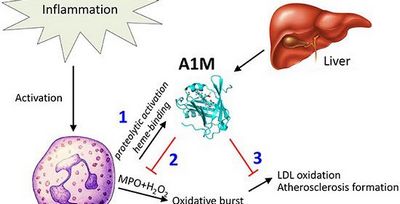Atherosclerosis is the common name given to a group of cardiovascular diseases, mainly atherosclerotic heart disease.

It is a progressive condition that impairs your ability to maintain proper blood circulation, increasing your risk of heart attack and stroke. When you are young, arteriosclerosis occurs only in people who have an inherited history of atherosclerosis in their family. As you age, atherosclerosis can occur in other areas of your body as well, but most commonly in your heart. It is therefore essential that people who are aged 40 and above seek treatment from their doctor as soon as possible.
Atherosclerosis is a disease of the arteries. The walls of your arteries are made up of several layers. They are made up of a fatty plaque that forms as a result of plaque-building activity by the arteries, along with fibrous plaques that can form due to plaque building activity, or due to other factors.
The disease that is known as atherosclerosis is usually referred to as “arteriosclerosis of the heart”atherosclerotic cardiovascular disease”. This is because atherosclerosis is a symptom of a more serious underlying illness. Your heart is not the only part of your body that can be affected by atherosclerosis.
Atherosclerosis is a relatively new disease. Early treatments for atherosclerosis were difficult.

However, with the advancement of science, it has become easier to treat atherosclerosis and even reverse its effects. Most of the current treatment options include medication, surgery, and medical procedures. Treatment options range from reducing the buildup of plaque to eliminating the main cause of the condition.
Atherosclerosis is caused when plaque builds up around the inner walls of your arteries, preventing the arteries from carrying blood away from your heart. When this happens, the cholesterol or fat from your body begins to build up on the walls of your arteries. As your blood flows through your arteries, some of the fats are collected. The accumulation of fat causes the walls of the arteries to harden, and this hardening cause the arteries to become calcified. Eventually, the walls of the arteries can no longer supply adequate blood flow to your heart and the condition of your heart becomes compromised.
Atherosclerosis can also be caused by a buildup of plaque in your arteries, known as atherosclerosis arteriosus. atherosclerosis arteriosus is much less serious than atherosclerosis. When your arteries become calcified, the buildup of calcium deposits produces plaque that can block the arteries. The walls of the arteries then become thickened and your heart’s ability to pump blood through your arteries weakens.

Atherosclerosis arteriosus usually does not produce symptoms. Because of the complexity of the symptoms of atherosclerosis, however, treatment options include surgery, medication and lifestyle changes.
If you have any family history of heart disease, it is important to get treated. Although it is a progressive disease, it can be controlled. However, if you are younger than 40 and are not at increased risk of having heart disease, treatment may not be necessary, unless you have had problems with your heart or blood vessels in the past. The treatment of atherosclerosis will depend upon the exact type of atherosclerosis that you have. Treating your arteriosclerosis now can prevent the condition from progressing into heart disease, as well as helping to increase your chances of prevention.
Symptoms of atherosclerosis vary from person to person. If you smoke, you should consider quitting. Smoking decreases the effectiveness of the treatments that will be used against your arteriosclerosis. Other treatments, such as reducing the buildup of plaque and preventing the onset of atherosclerosis, can help you avoid experiencing these symptoms. In most cases, once you are diagnosed with atherosclerosis, treatment can begin as soon as you are diagnosed, but this depends on the severity of the condition that you have.